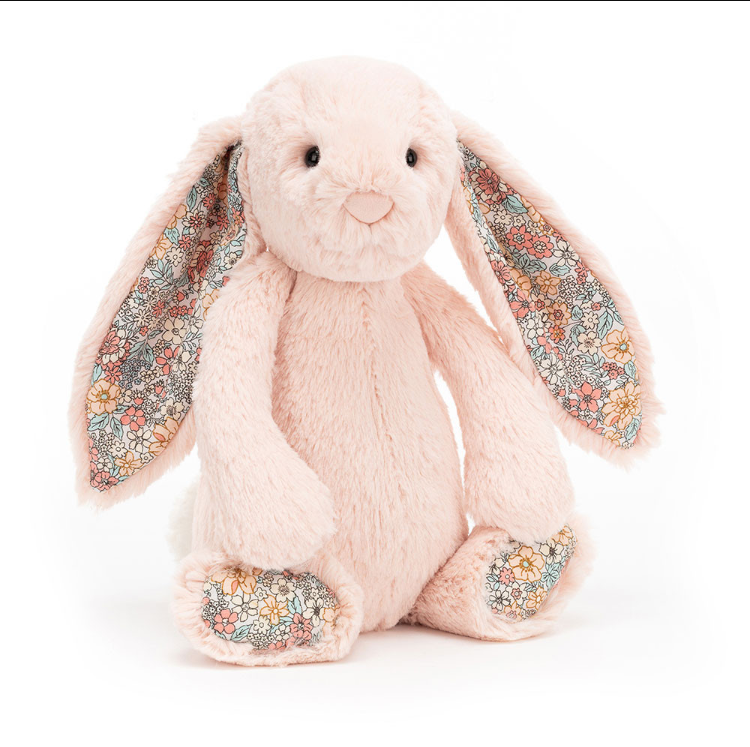One of the first telltale signs of authenticity lies in the label attached to the toy. Genuine Jellycat products feature specific markers that denote their legitimacy. Look for clear, crisp printing with no smudges or inconsistencies. The font should be uniform, and the colors vibrant. Pay attention to spelling errors or discrepancies in logos and branding—these are red flags indicating a counterfeit product.
If you're a fan of cuddly plush toys, chances are you've encountered Jellycat—a brand synonymous with adorable designs and impeccable quality. But distinguishing between genuine Jellycat products and knock-offs can be challenging in a world where counterfeits abound. So, how can you tell if that cute bunny or fluffy cat is the real deal? Let's explore some foolproof methods to ensure you get an authentic Jellycat experience.

Quality of Materials
Authentic Jellycat toys boast superior craftsmanship and use high-quality materials in their construction. Run your fingers over the plush fabric—genuine Jellycat toys feel soft, luxurious, and durable. Pay close attention to details like stitching and embroidery—these should be neat, even, and free from loose threads or irregularities. If the material feels rough or if you notice shoddy workmanship, chances are you're dealing with a fake.
Attention to Detail
Jellycat prides itself on attention to detail, which is evident in the fine craftsmanship of its toys. Genuine Jellycat products exhibit meticulous stitching, intricate features, and lifelike expressions. Take a closer look at the eyes, nose, and mouth—are they securely attached and well-defined? Fake Jellycat toys often lack this precision, with sloppier stitching and poorly executed details.
Comparison with Official Sources
When in doubt, refer to official Jellycat sources for comparison. Visit the brand's website or authorized retailers to familiarize yourself with authentic products. Compare the item in question with official images—paying close attention to design elements, colors, and proportions. Discrepancies between the product and official sources clearly indicate counterfeit goods.
Purchase from Trusted Sellers
To minimize the risk of purchasing fake Jellycat products, always buy from trusted sellers. Opt for authorized retailers or reputable online stores with a track record of selling authentic merchandise. Be wary of third-party sellers offering steep discounts or deals that seem too good to be true—these are often tactics used to offload counterfeit goods.
Price Discrepancies
While everyone loves a good bargain, excessively low prices can be a warning sign of counterfeit products. Familiarize yourself with the typical pricing range for genuine Jellycat toys, and be wary of deals that deviate significantly from this norm. Remember, quality comes at a price, and suspiciously cheap products are likely to be counterfeit or of inferior quality.
Customer Reviews and Feedback
Harness the power of customer reviews and feedback to gauge the authenticity of Jellycat products. Look for consistent positive reviews and feedback from satisfied buyers. Be wary of products with minimal or negative reviews, as these may indicate issues with authenticity or quality.
Physical Store vs. Online Purchase
When purchasing Jellycat toys, consider the advantages and disadvantages of buying in physical stores versus online. While physical stores allow you to inspect the product firsthand, online purchases offer convenience but carry a higher risk of encountering counterfeit goods. Exercise caution when buying online, and ensure you're purchasing from a reputable seller.
Scrutinize Packaging
Authentic Jellycat products come packaged with care, featuring high-quality materials and attention to detail. Examine the packaging for signs of authenticity, such as holographic stickers or embossed logos. Be wary of flimsy or poorly executed packaging, as this may indicate counterfeit goods.
Awareness of Common Counterfeits
Certain Jellycat designs are more susceptible to counterfeiting than others. Familiarize yourself with popular counterfeit designs and specific features to watch out for. Pay attention to subtle differences in color, shape, and size, as counterfeiters often mimic popular designs with slight variations.
Trust Your Instincts
Above all, trust your instincts when assessing the authenticity of Jellycat products. If something feels off or too good to be true, it probably is. Listen to your gut feelings, and don't be afraid to walk away if you doubt a product's authenticity.
Educational Resources
Take advantage of online guides and resources created by fellow collectors and enthusiasts. These resources often provide invaluable tips and insights for identifying genuine Jellycat products and spotting counterfeits.
Repercussions of Purchasing Counterfeit Goods
The allure of a bargain may seem tempting, but purchasing counterfeit Jellycat products comes with consequences. Not only are you risking your hard-earned money on inferior goods, but you're also potentially harming the brand and its reputation. Support authenticity and integrity by opting for genuine Jellycat products from trusted sources.
Conclusion
Distinguishing between real and fake Jellycat products requires keen attention to detail and a healthy dose of skepticism. By following the tips outlined above and trusting your instincts, you can ensure that your cuddly companions are authentic Jellycat treasures worthy of snuggles and admiration.

